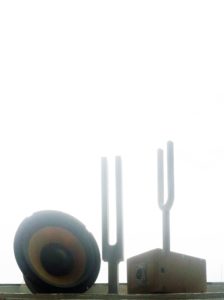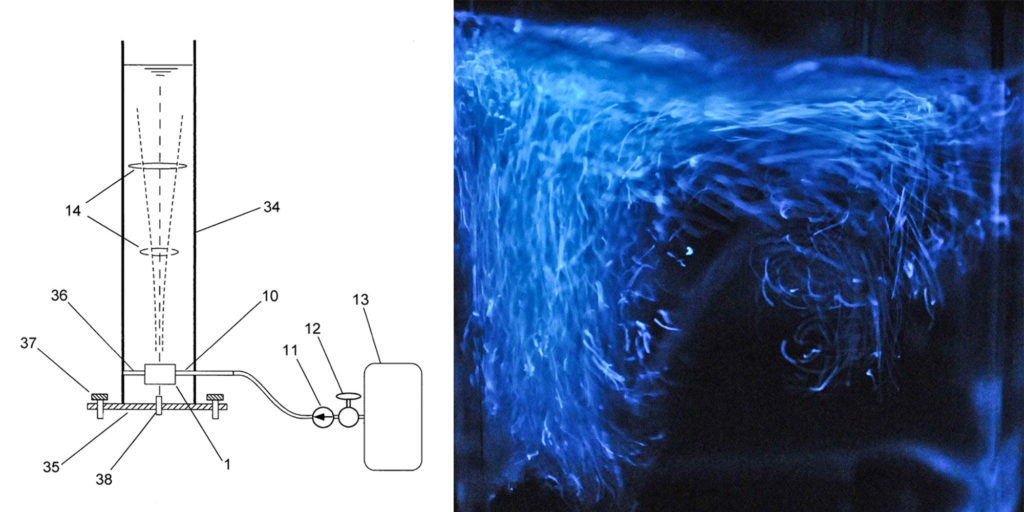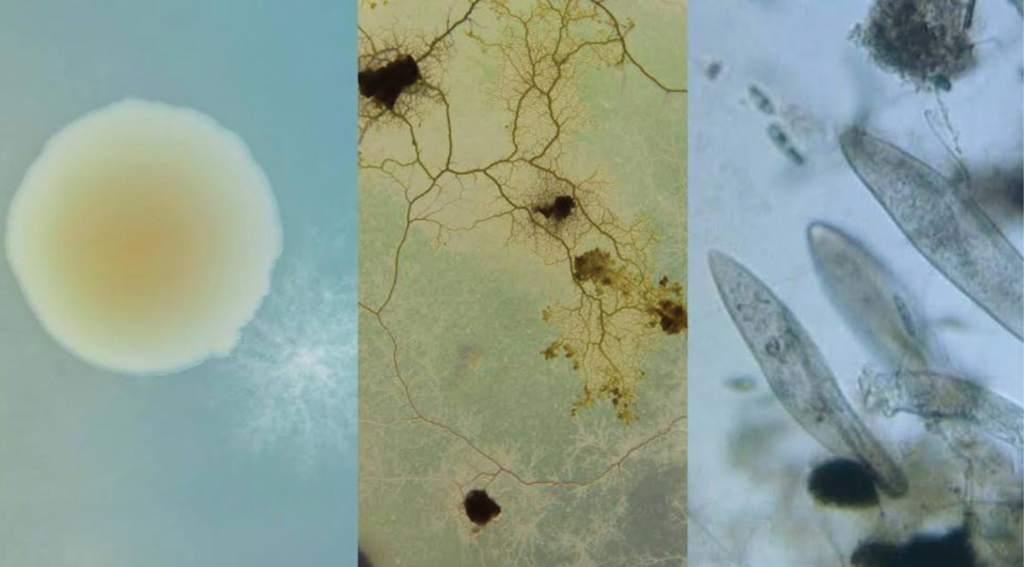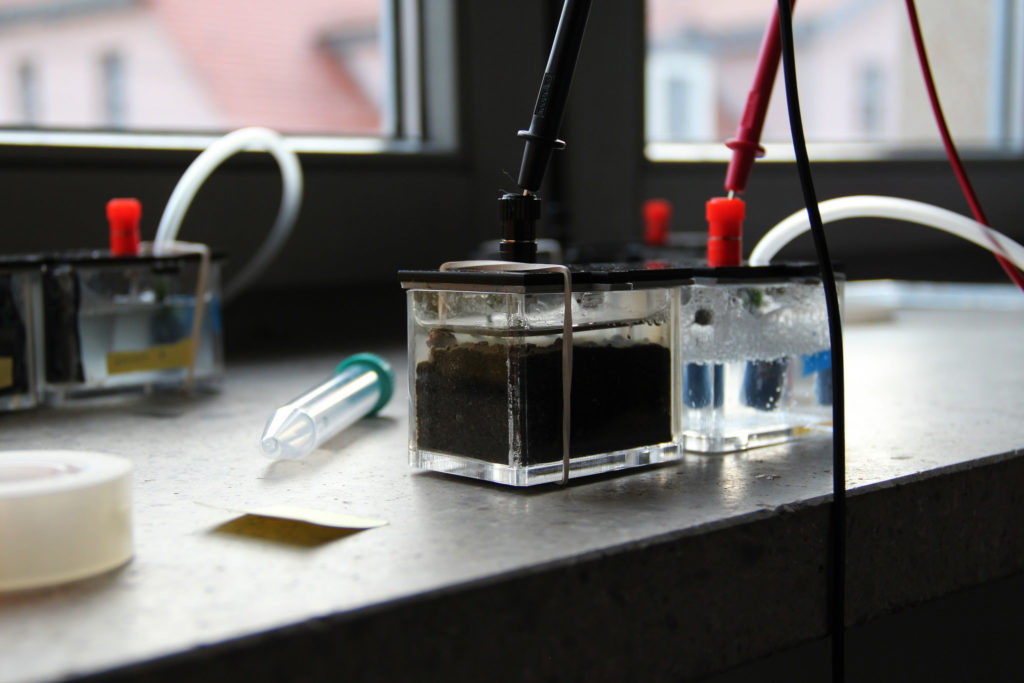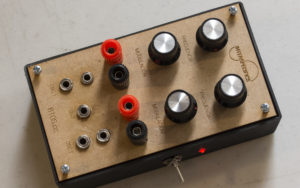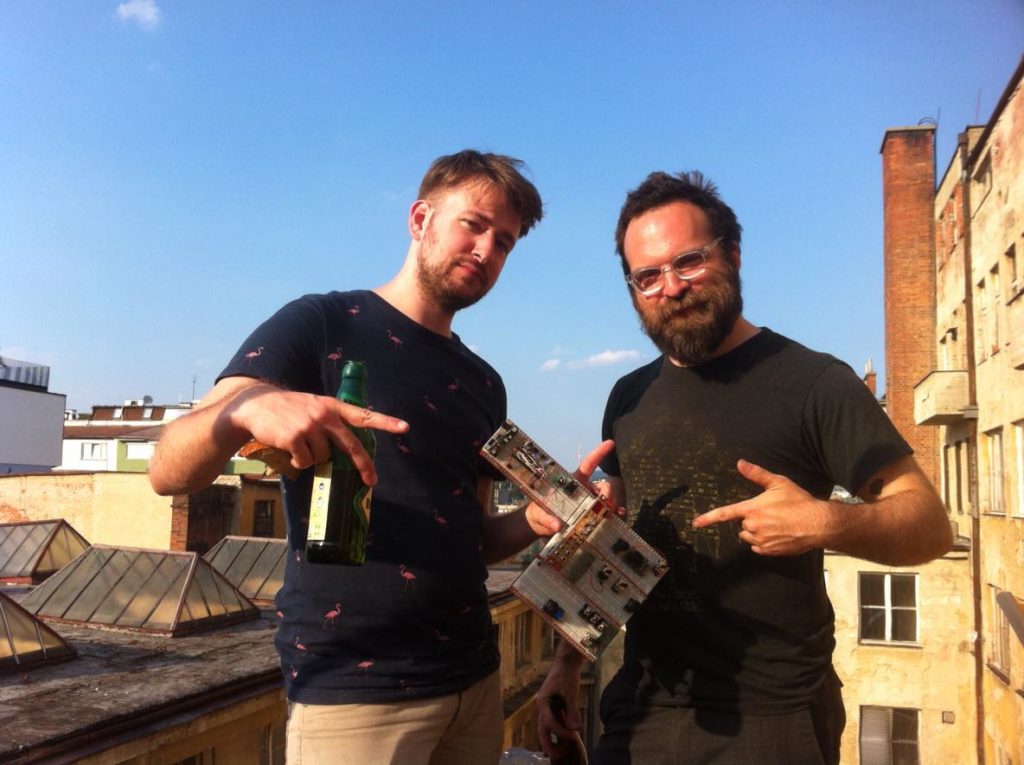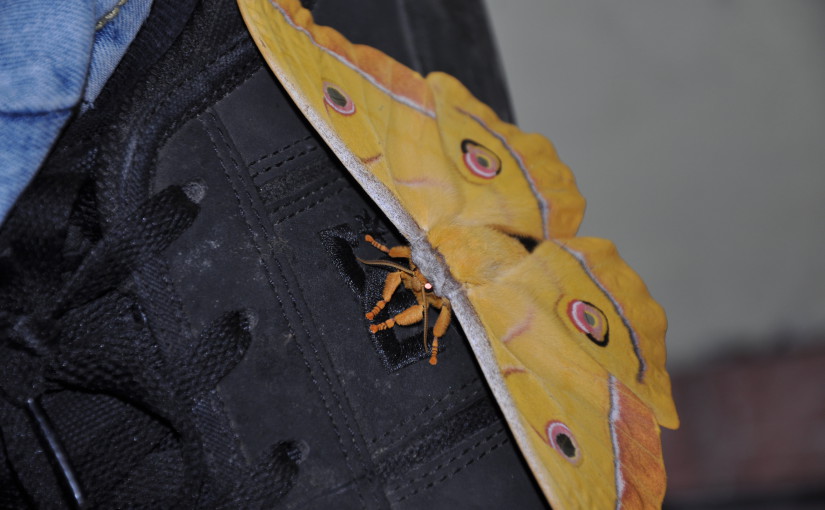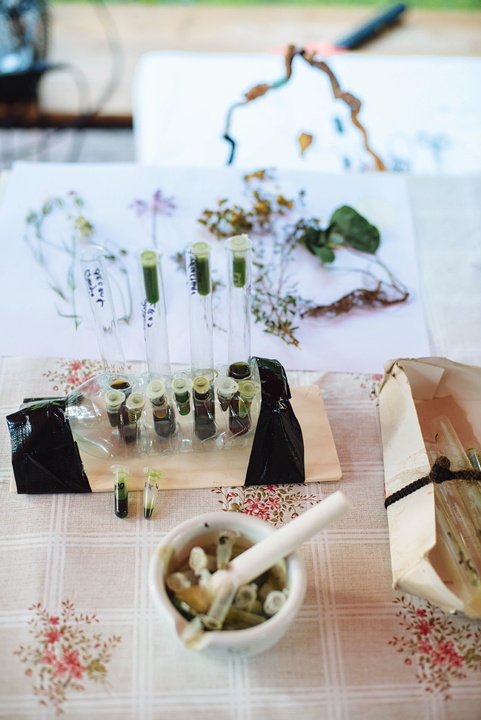
Lynne:
Basics of the breadboard! Lynne is here today for everyone who wants to get into that. Once you understand this part it will make it easier for you to work with Peter and collaborate with other projects.
Dario:
Tomorrow Dario is taking a group of 10 to Krnsko lake. The trip starts at 7:30, the hike will be two and a half hours in one direction, so the whole thing will take us about six hours. We encourage people that haven’t gone on a trip, to apply. Places are limited! We will take some food with us, but you can also get something to eat at the lake.
Marc:
He is still working on his box, at the end of the week we can make some basic analysis of the surrounding material. We already tested the resistance of plants with an instrument Marc built. We can use chlorophyll that we extracted yesterday. We will also use light today, and step by step we will get a collage of tools that will enable us to look at plants from a different point of view.
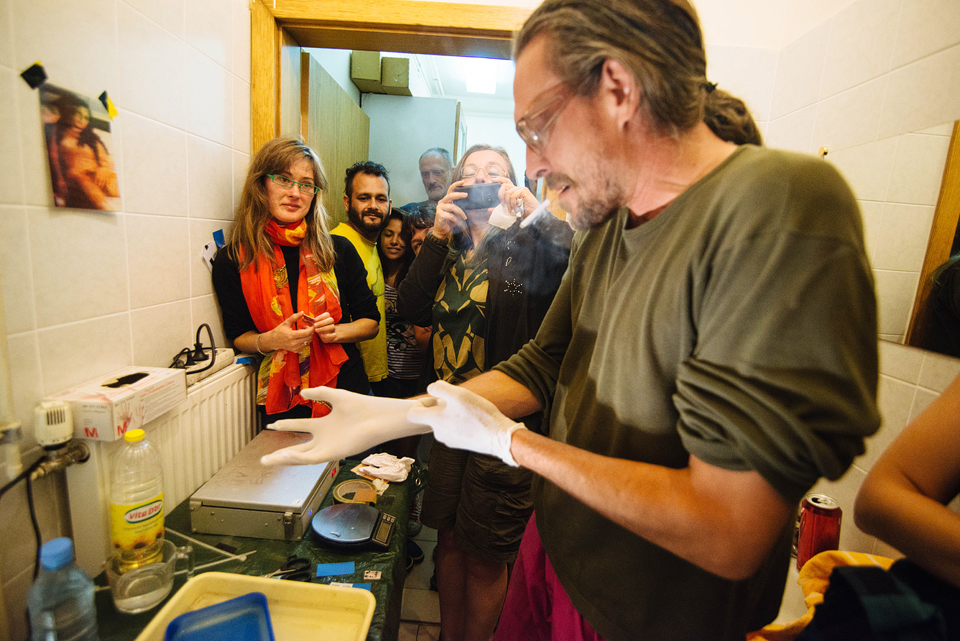
Sebastian:
Took some recordings of surroundings using headphones. He already has a small prototype board. He still has some work with different cables, but the plan is now to add three more pieces and go further in the process. People are welcomed to join!
Michael:
The multiplying cameras project is going quite well. We already have some nice photos. Photographing is taking a nice course into different directions.
Tom:
We want to make a LED canape, and note the ownership of natural environment! We’ll try to build a frame that will help us show the environment ownership in this area.
Lavoslava:
Selfie wearables – three parts – camera with a photo cell, a glove with a trigger and a broche with a led lamp that triggers the glove. We need to improve the light, so it works in the day time. For now it’s a selfie camera for night scene!
Peter:
We were working till 5 in the morning. Fixed the filter, 9 working synthesizers! Two days of hard work. Today we’re doing the final stage, reviewing the material. We want to integrate with other projects. We plan to have journeys into the woods and connect gathered footage with synths.
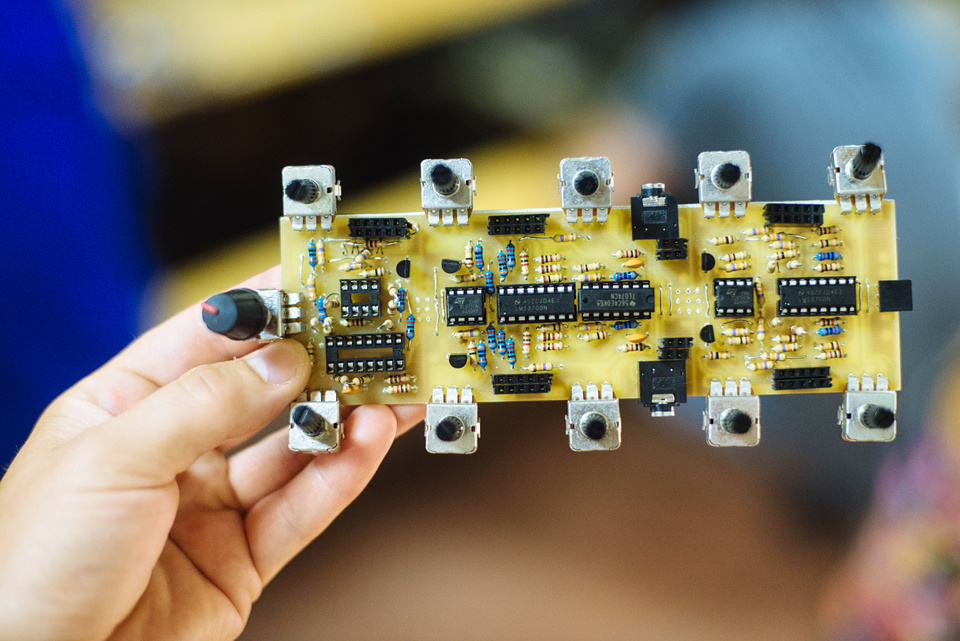
Robertina:
We have been working together on different nodes, and we want to connect them together.
Boštjan:
Finished drum sets! Today working on synthesizer. We need a midi interface synthesizers!
Tomaž:
Looking for material and pictures from the camp. The web page is already coming together!
Werner:
He’s finishing his synthesizer. It’s almost working already! Today he’s starting to work on his bluetooth speakers and connecting it with synthesizer.
Luka:
Today he’ll be starting putting up the web server, people can come and learn about it. He also started setting up the 3D printer so we can slowly start printing. If we can have some concerts and jam sessions! Nothing depressing please.
Katja:
People should bring photos to her so we can put it in an archive and also use it! We want to have as much material as possible by the end of the week.


